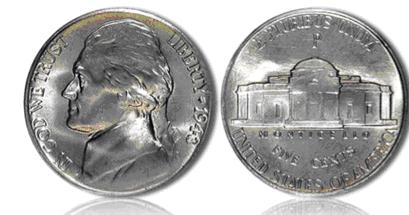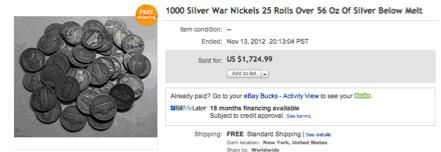by Kerry Lutz
FinancialSurvivalNetwork.com:
 Several weeks ago I mentioned that I was purchasing silver at a discount to spot. Many of you were skeptical and didn’t believe that it could be done. I purchased silver at nearly six (6) percent below spot. Here’s the proof to back it up. The concept is simple, but it demonstrates that even in the Internet age, where information can be instantly obtained anywhere on the planet, market inefficiencies still exist. Perhaps there are other reasons why this disparity exists, but you can judge that for yourself.
Several weeks ago I mentioned that I was purchasing silver at a discount to spot. Many of you were skeptical and didn’t believe that it could be done. I purchased silver at nearly six (6) percent below spot. Here’s the proof to back it up. The concept is simple, but it demonstrates that even in the Internet age, where information can be instantly obtained anywhere on the planet, market inefficiencies still exist. Perhaps there are other reasons why this disparity exists, but you can judge that for yourself.
When I was a child, my brother and I collected coins. We’d go to the bank and buy $20 to $30 worth of pennies, nickels, dimes and quarters at time. We were trying to fill in the empty spaces in our blue books. My dream was to find an extremely rare 1909 SVDB penny. It was fun, a lot like looking for a needle in haystack, but it kept me out of trouble, for a while anyway. During this time, I made a fascinating discovery; 1942-1945 nickels featured an interesting mintmark above the dome on Jefferson’s Monticello. They bore very large letters; ‘P’ for Philadelphia (its first appearance on a US coin). ‘S’ for San Francisco and ‘D’ for Denver were also present. I thought this was extremely cool and couldn’t wait to tell my brother, the “brains” of the operation. He quickly deflated my bubble, informing me that I was stupid and didn’t I know that that’s how they made nickels during the war.
As it turned out, there was more to the story. With the entry of the United States into World War II, nickel became a critical war material and was in tight supply. The mint needed to decrease its use of the metal. Congress authorized it to produce a coin that was half silver and half copper, but allowed the mint to make the ultimate decision. It settled on 56% copper, 35% silver and 9% manganese. This allowed vending machine slug detectors to weed out counterfeits. The larger than life mintmark was there to allow the coins to be easily pulled from circulation and melted down to reclaim their silver after the War. It is amazing to think that a nickel could be so valuable that criminals would counterfeit it. Nearly 1 billion war nickels were produced. Most were melted down, so it is impossible to determine how many are still in circulation.
The actual amount of nickel saved was insignificant, but it was the symbolism that counted. Other than the enlarged mint markings, these coins pretty much look like ordinary nickels. But that’s where the similarity ends. A war nickel’s silver content stands at $1.91 (11/27/12), a 3829.31% return on the original 5 cent investment, a record that even David Morgan would be proud of. Numismatic coins aside, the war nickel’s investment return has outperformed every silver coin ever made. 90 percent silver dimes, quarters and half dollars only appreciated 2461.70%. Morgan and Peace dollars were slightly higher at 2632.05% while 40% silver Kennedy half dollars (1965-1970) appreciated 1006.56 and 40% silver Eisenhower dollars (1971-1976) went up 1076.14%.

I explained these facts to a friend who still didn’t believe I could do it. So I went on eBay and purchased $50 face value of war nickels for $1725 and got free shipping too. At the time the coins’ metallic value was $1.83, a grand savings of $105 or 5.73% off of then spot. The real issue is will these coins ever trade for their intrinsic silver value. I can’t answer that question other than to tell you that they were selling for $3.35 each during the height of the silver craze in 1980. When silver again reached its near record high, the coins hit $2.80 a piece. Markets often trade at a discount or a premium for long periods of time. But there is a direct relationship to the market value of war nickels and their silver content. Right now, you’re getting paid to wait.
– Kerry Lutz

